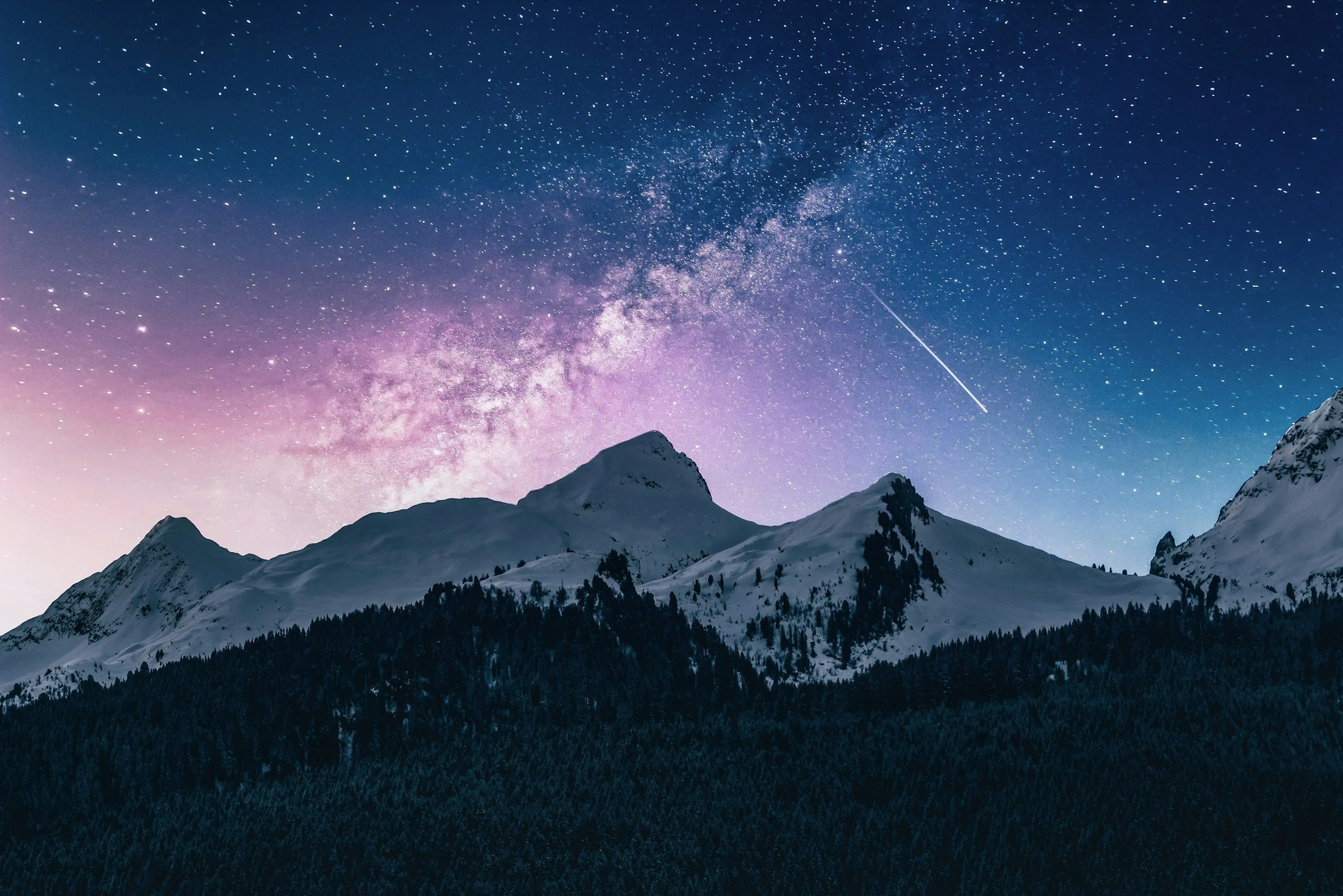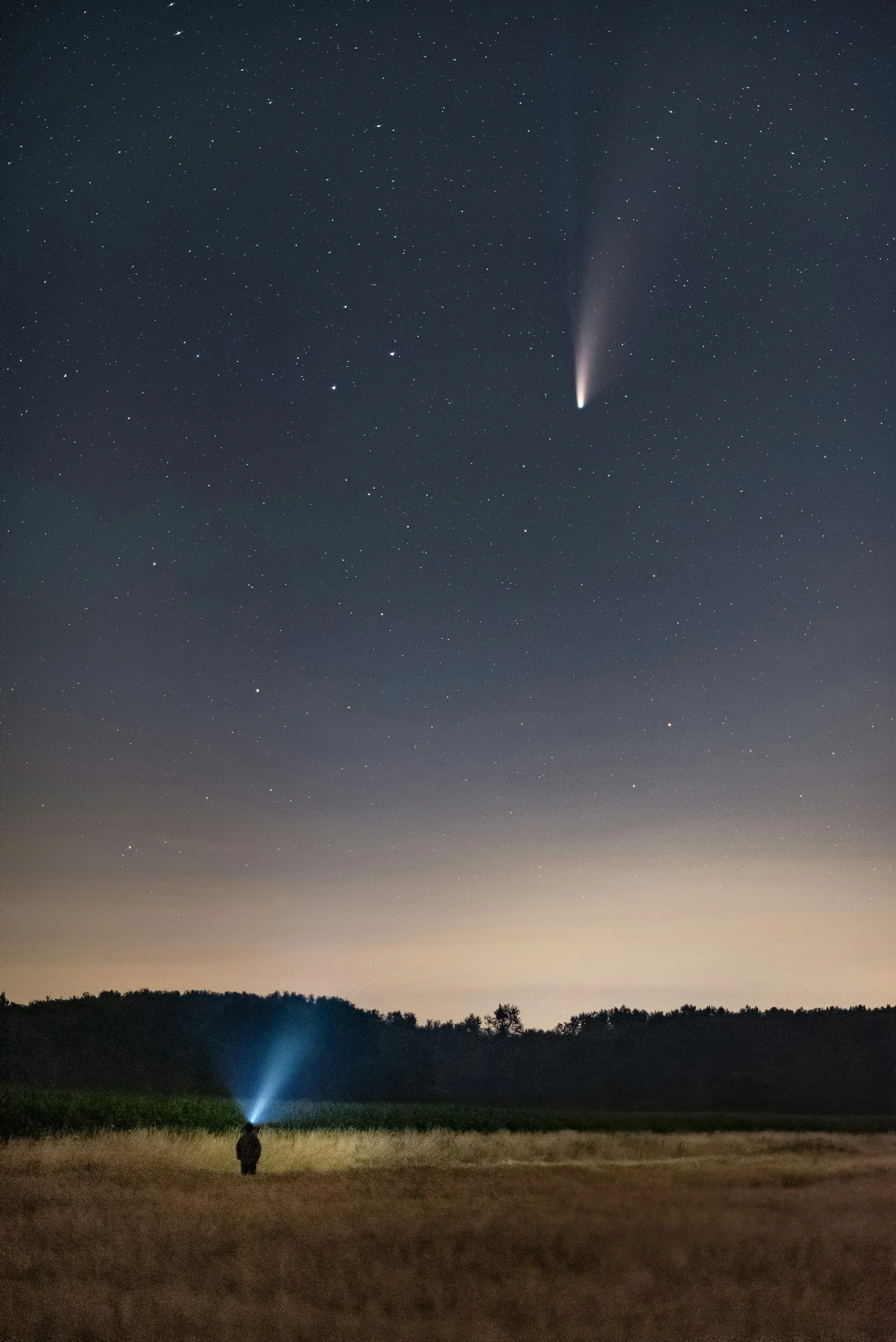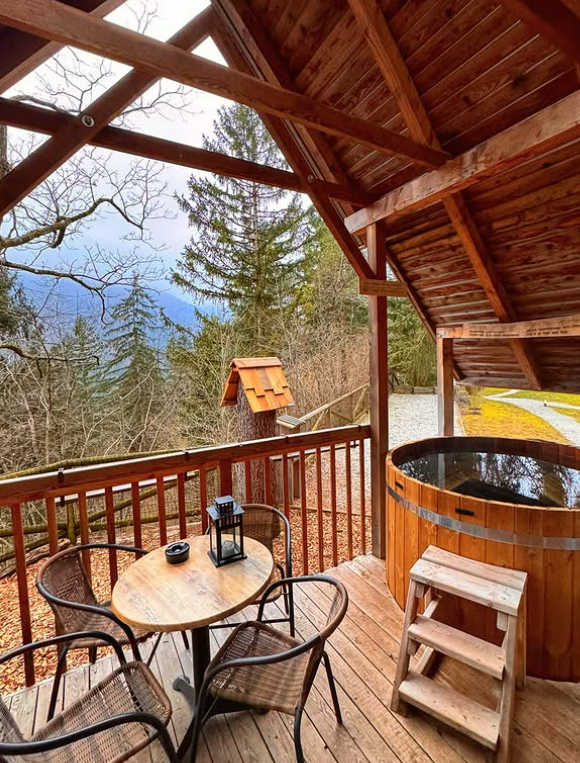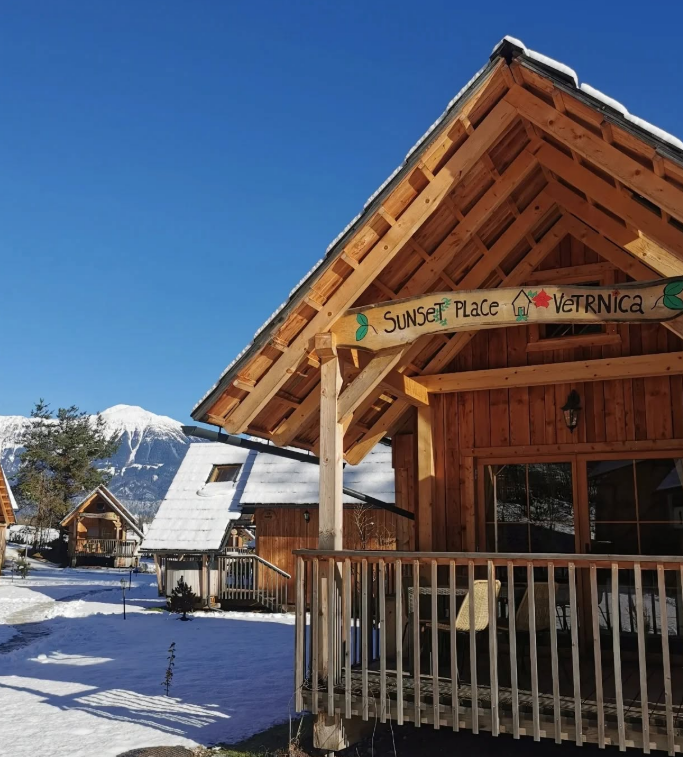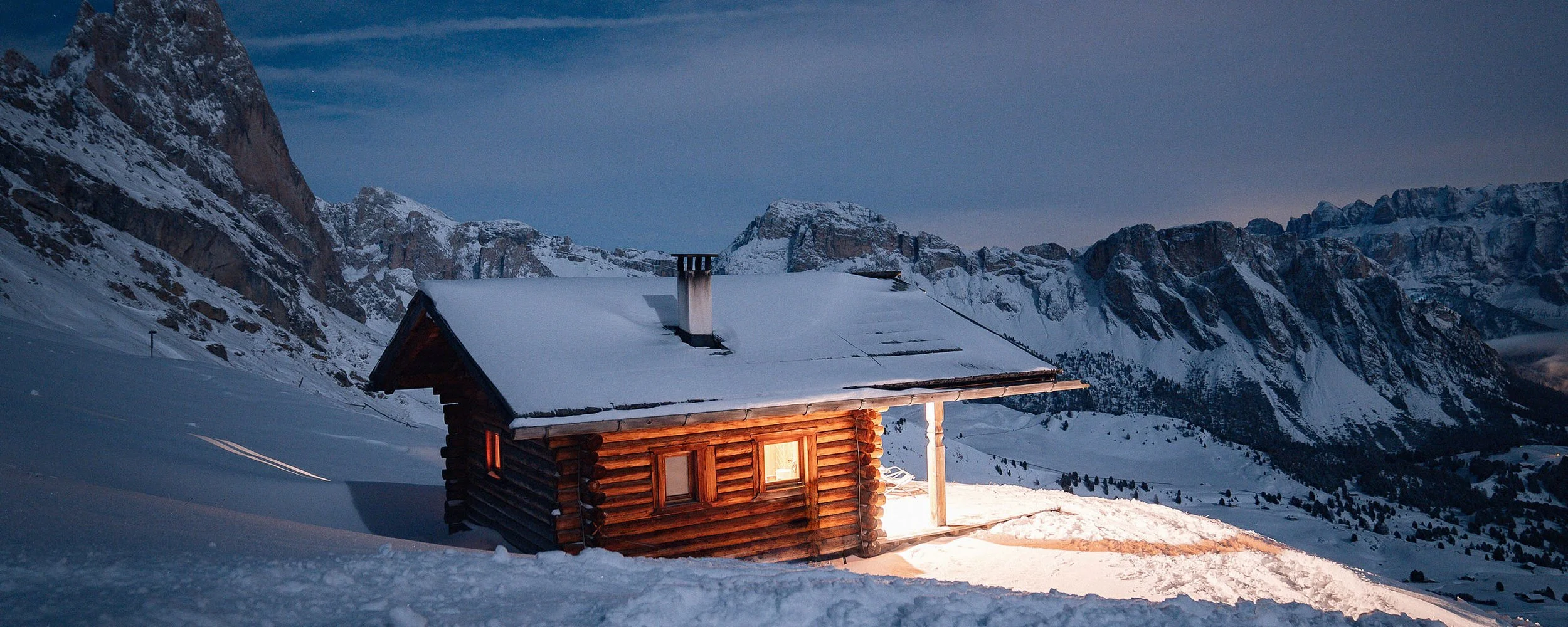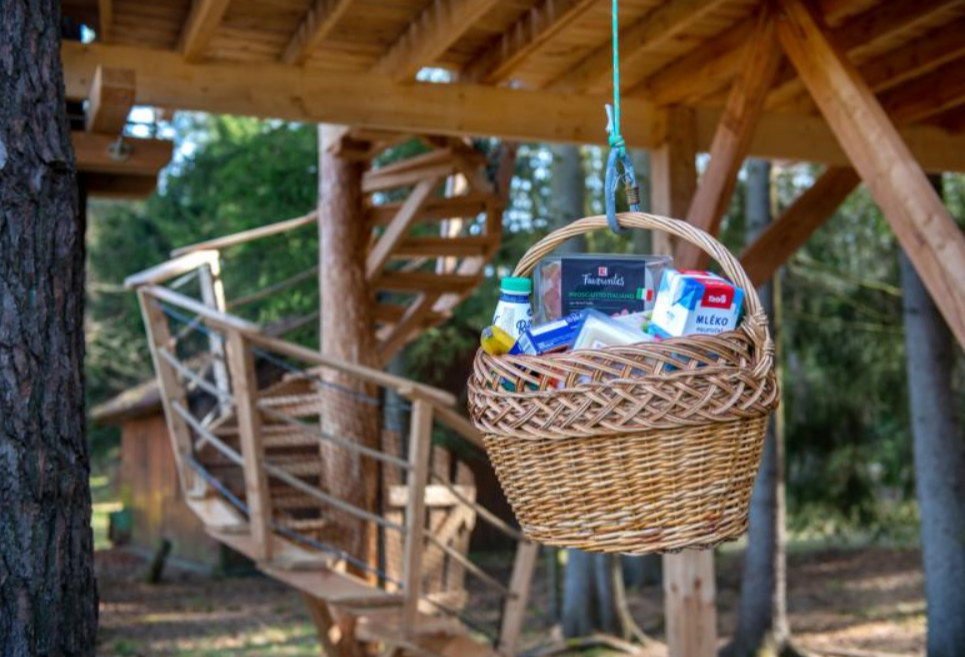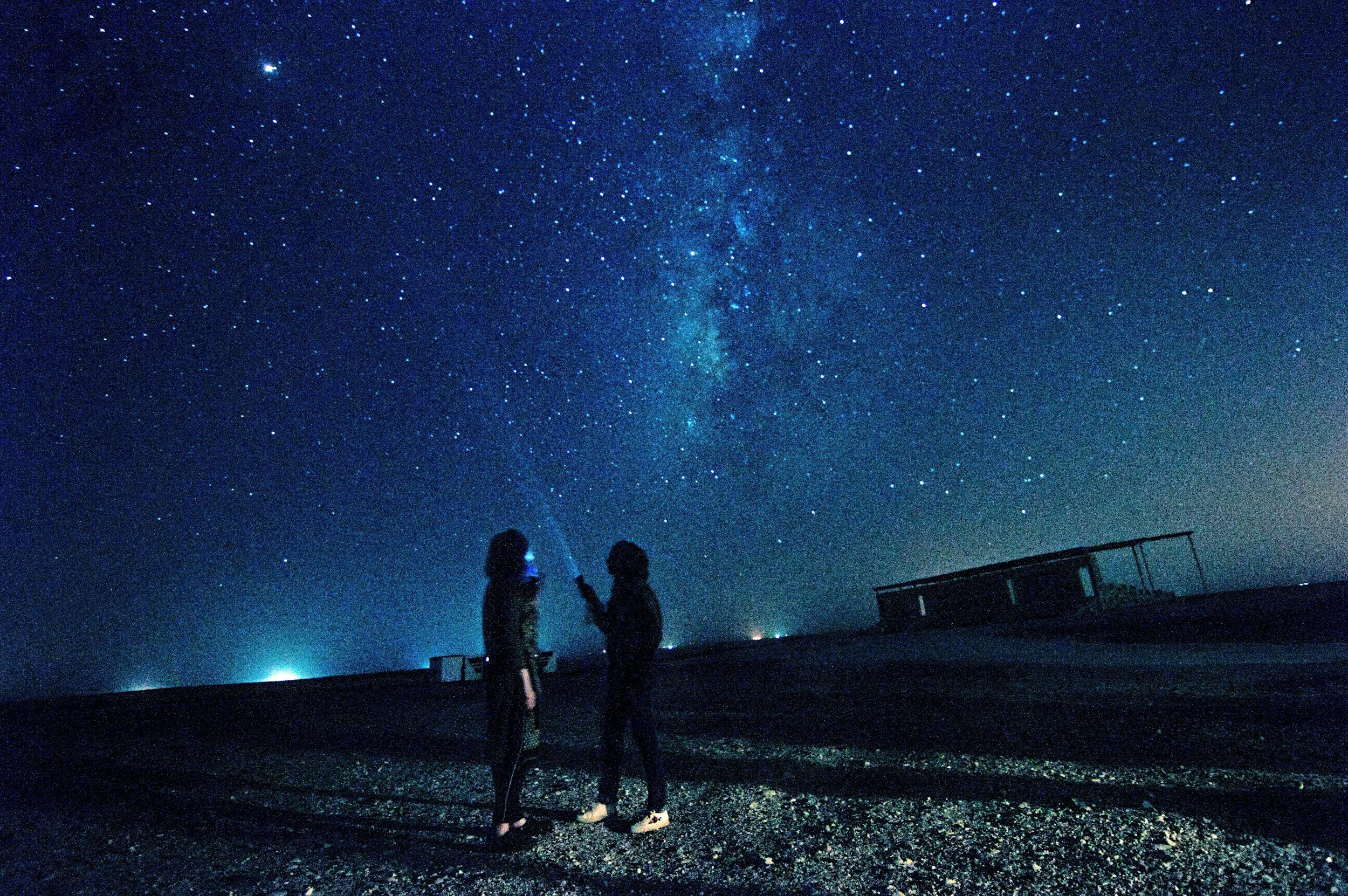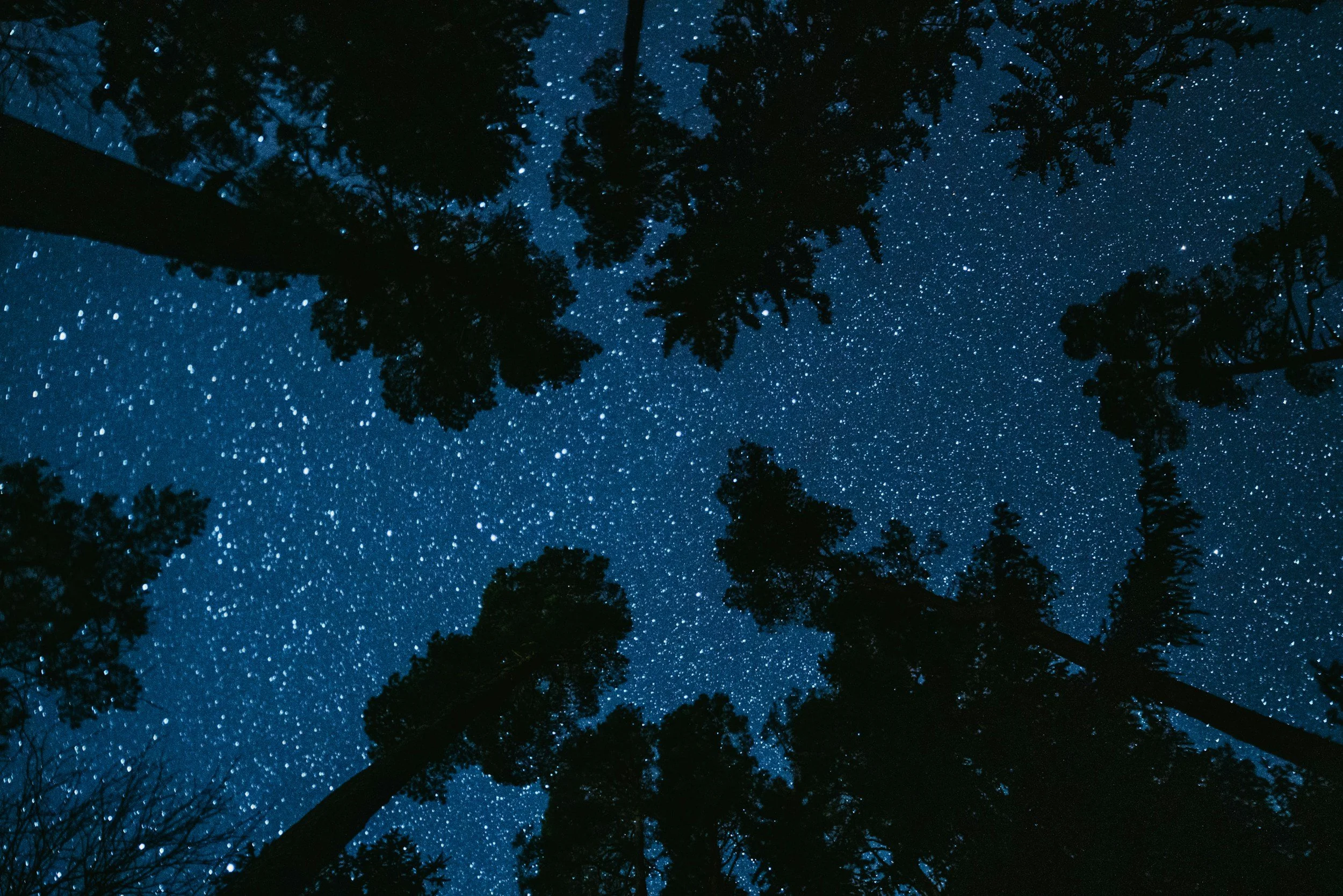Geminids 2025: Winter Glamping & Stargazing Escapes in Central Europe
Not everyone dreams of traveling in December. It’s cold, the days are short, and many places across Europe are either closing for the season or gearing up for the holidays. But sometimes, winter gives you a reason to go! Not for crowds or events, but for something quieter, bigger, and far above all of it. Personally, I love stargazing trips in Europe. And I have a feeling you do too!
Every year, for just a few nights in mid-December, the Geminid meteor shower turns the night sky into a moving display of light. And in 2025, the peak falls on Saturday, December 13 into the early hours of Sunday, December 14 - making it the perfect excuse for a cozy, off-grid weekend escape.
The Geminids are known for being one of the most visible and active meteor showers of the year, with up to 100 shooting stars per hour. You don’t need a telescope, and you don’t need a mountain-top observatory - just clear skies, a dark horizon, and enough time to slow down and look up.
And this is where the travel part comes in: Central Europe is one of the best regions to watch the Geminids, especially in areas where the air is dry, the light pollution is low, and the skies are frost-clear. December weather in rural Austria, Slovenia, the Czech Republic, and parts of Germany often delivers those exact conditions. Cold, yes, but still and crisp and full of potential.
Even better? You don’t have to rough it. A growing number of heated glamping stays across the region offer the perfect setup: warmth, comfort, and direct access to the night sky. Think wood-burning stoves, insulated cabins, private decks, and hot drinks under the stars… a far cry from summer camping, but every bit as close to nature.
In this guide, you’ll find exactly how to plan a slow, stargazing-focused winter getaway: the best nights to go, where to stay for real dark-sky views, what to pack, and how to make the most of this quiet, brilliant moment in the middle of the cold season.
Why the Geminid Meteor Shower 2025 Is Worth Traveling for in Europe
If you’ve never planned a trip around a meteor shower before, this is the one that makes it worth the effort. The Geminids are widely considered the most reliable and spectacular meteor shower of the year. And this is not just because of how many meteors appear, but because of how visible and slow-moving they are. You don’t need any special equipment, you don’t need to know constellations, and you definitely don’t need to be an astronomy enthusiast. You just need clear skies, a warm coat, and a bit of patience.
On a good night, you can expect to see up to 100 meteors per hour, some of them long and bright enough to leave streaks in the sky for a few seconds. And because they travel more slowly than summer showers like the Perseids, they’re easier to spot - even if you’ve never tried stargazing before.
In 2025, the peak falls on a Saturday night into early Sunday morning (December 13–14), which means no weekday alarms, no vacation time to plan around, and the chance to turn it into a simple, meaningful weekend trip. There’s something kind of perfect about that timing: a cold winter night, a quiet place, and a sky that reminds you how much is always happening above us.
Even better, the moon will be just past its third quarter. That means it sets before the best part of the show, giving you a darker sky and better visibility from midnight through to dawn. It’s the kind of setup that stargazers hope for, and casual travelers can still appreciate.
If you’ve ever wanted to step away from screens, cities, and crowded December calendars, and just stand outside under something bigger - this is the excuse you didn’t know you needed.
Best Way to Watch the Geminid Meteor Shower 2025? Heated Glamping in Europe
Let’s be honest: standing outside in freezing temperatures waiting for shooting stars sounds a lot more romantic than it feels - unless you’ve got somewhere warm to go afterward. That’s what makes glamping such a good fit. You’re out in nature, somewhere properly dark and quiet, but instead of crawling into a tent, you’ve got a heated cabin, a real bed, maybe even a wood stove or a hot tub. You can walk outside, look up, take your time… and then come back in, warm your hands, and make a cup of tea without wishing the night would end faster.
It also gives the whole thing more weight. Instead of a rushed one-night outing, it becomes a proper weekend. You might get in early, go for a walk, cook a simple dinner, and then spend the night watching the sky with zero noise around you. In the morning, everything’s cold and still, and it actually feels like winter. Not the version with shopping and lists and noise, but the one with frost and quiet.
And if you’re in the right place (somewhere away from city lights, like parts of Austria, Slovenia, or the Czech Republic), the skies can be incredible. Dry air, cold nights, and no glow from the next town over. It doesn’t take much to make it memorable. Just the right conditions… and a bit of patience.
Where to go: 3 heated glamping stays with dark skies
Glamping Ribno, Slovenia
If you want to see the Geminids without giving up comfort, Glamping Ribno is a solid choice. It’s set on the edge of a quiet village just outside Bled, tucked between forest and farmland, with wide views toward the Julian Alps. The site is small and purposefully low-impact: think wooden cabins built from local materials, green roofs, and a focus on sustainability that actually feels genuine, not performative.
Each cabin is insulated and heated (heated floors make a huge difference in winter), with a private outdoor hot tub, big windows, and a small terrace that faces open sky. You won’t get total wilderness here (it’s not deep in the mountains), but the area is dark enough to see the stars clearly, and the surrounding forest keeps things quiet once the sun goes down. It’s peaceful in the way that actually matters: no cars, no light spill, no distractions.
After midnight, you can step outside in slippers and a coat, sit with a blanket and a drink, and just look up. If it’s too cold, you can even lie in bed with the curtains open - still warm, still watching.
The village of Ribno is only about 2 km from Lake Bled, but it feels miles removed from the tourism that fills the area in summer. It’s also a short drive or bus ride from Ljubljana, which makes it easy to reach even if you're not renting a car. If you plan it right, you could go from city coffee shops to a forest cabin and a sky full of meteors in a single afternoon.
Why Glamping Ribno Is a Great Base for the Geminid Meteor Shower
Winter weather around Ribno is often dry and clear, especially in mid-December. The position just below the Alps gives you an unobstructed view to the south and east (perfect for meteor watching), and the low humidity means you’re more likely to get those crisp, frost-edged nights that make stars stand out. And because you're not far from civilization, it's one of the few places where you can stargaze properly without needing to go fully remote.
Almliesl Glamping Chalet, Salzburg Region, Austria
This quiet chalet stay in the Lungau region of Salzburg is a great option if you want something peaceful, cozy, and still properly warm in winter. You’re not camping here - the cabins are real wooden chalets, fully insulated, heated, and made for Alpine winters. It feels like a small, off-grid home rather than a rental.
Each cabin comes with a kitchen, a wood-burning stove or electric heating, proper beds, and plenty of space. There’s no Wi-Fi in some of the chalets, and mobile reception can be patchy (which honestly makes it easier to disconnect…). You can bring groceries, cook something simple, and not feel like you need to go anywhere once you arrive.
At night, it gets dark in that real way you only get in the countryside - no street lights, no car noise, no glow from a nearby village. Just trees, stars, and cold air that feels clean enough to wake you up. Step outside with a blanket and a hot drink, or just turn off all the lights and watch the sky through the window. The longer you stay out, the more you’ll see.
Why it’s a good spot for the Geminids:
Lungau is part of a certified UNESCO Biosphere Reserve, and it’s one of the least light-polluted regions in Austria. December often brings dry, cold, high-pressure systems, which means long, clear nights - perfect for stargazing if the clouds stay away.
Because you're staying in a real cabin (not a tent or pod), it's much more comfortable for a proper two-night trip. You can warm up easily, make food, and sleep well after a late night outside. If you're flying or traveling by train, the chalet is reachable via Salzburg + local bus connections, and you’ll still feel like you’re far from everything.
Treehouse Resort Ralsko, Czech Republic
If you’ve ever wanted to sleep in a treehouse as an adult (not the novelty kind, but a proper, well-designed hideout in the woods), Treehouse Resort Ralsko is one of those places that actually gets it right. It’s tucked away in northern Bohemia, in a quiet forested area that feels remote without being difficult to reach. You’re off-grid here, but not uncomfortable.
Each treehouse cabin is perched a few meters above ground, fully insulated, and fitted with heating, a private balcony, and large skylights so you can look out (or up) whether you’re indoors or out. The spaces are minimal but thoughtful: natural wood, soft lighting, a small kitchen area, and a proper bed. Some cabins even have composting toilets and rainwater systems, part of the site’s focus on sustainability without sacrificing comfort.
It’s quiet in a way that takes a few hours to notice. No distant road noise. No lights from other cabins bleeding through the trees. Just wind, maybe an owl, and a lot of stillness. It’s the kind of place where you slow down naturally. You read, you cook something simple, you step outside without checking the time - and when night falls, it gets properly dark.
That’s what makes this place such a great choice for the Geminid meteor shower. You don’t need to walk anywhere or set up anything. Just step onto your deck in slippers and a jacket, or stay inside and watch from bed through the skylight. The trees thin out above the cabins, so the view is open enough for stargazing but still feels sheltered and safe.
Why This Treehouse Stay Is One of the Best Stargazing Spots in Czechia
The Ralsko region was once a restricted military area, which means much of the surrounding landscape has been preserved, undeveloped, and free of major light pollution. The elevation is modest, but the key is distance: you’re well away from any urban glow, and the forest naturally blocks stray light from nearby buildings.
This part of Czechia is also known for its stable, dry weather in December, especially during high-pressure systems that bring clear, frosty nights. If the forecast looks promising, you’re in one of the best low-key dark-sky areas in the country - with a warm, quiet base where you can just exist for a couple of days without needing anything more.
Treehouse Resort Ralsko is ideal for couples, solo travelers, or anyone who wants to feel completely away from the world without being stranded. If you’re looking for something a little magical but still grounded and real, this is one of those places that just quietly works.
When to Book Glamping for the Geminids 2025
If you’re planning a glamping trip for the Geminid meteor shower, it’s smart to book well ahead. Even though it’s low season, places with wood stoves, clear sky views, or outdoor decks tend to fill up early - especially for the December 13–14 weekend.
Aim to book by late September or October, and always check the small print:
Does it have heating?
Is hot water available in winter?
Are you expected to bring firewood or bedding?
It’s worth double-checking with the host or owner, especially in off-grid locations. Winter glamping in Central Europe can be amazing — but it works best when you know what to expect.
Small Details That Make the Weekend Feel Special
One of the best parts of glamping during the Geminids is that you can make the whole weekend feel simple, but still good. It’s not just about watching the sky.
A lot of guests bring along local cheese, bread, or a bottle of wine from nearby shops to enjoy by the fire or in the cabin. If you’re at a place like Feuercamp or Ribno, there might be a shared firepit or sauna, or just space to cook something easy while the stars start to show up.
Some people bring ingredients for mulled wine or hot grog, others just a thermos and some snacks. You don’t need much - but those little things (something warm in your hands, something simple to eat) make it feel like more than just “a night outside.”
What to Pack for Glamping and Stargazing During the Geminids 2025
Even with heating and a good duvet, nights in mid-December will be cold. Especially if you're staying somewhere off-grid where the warmth comes from a wood stove, not central heating. Expect temperatures well below freezing, and pack like you’ll be outdoors more than you think.
Layers are key. Thermal leggings, wool socks, a proper winter coat, gloves, and a warm hat will make a huge difference… Not just for stargazing, but for those in-between moments, like stepping outside to grab more firewood or watching the sky before bed. Some cabins provide slippers or robes, but it’s worth bringing your own if you want that extra bit of comfort.
If you have room, a hot water bottle is a small thing that makes a big difference. Fill it before bed, tuck it under the covers, and your whole evening feels cozier. A thermos of tea, mulled wine, or just hot water with lemon also goes a long way when you’re standing under the stars at midnight.
For the meteor shower itself, you don’t need a telescope or fancy gear. The Geminids are fully visible to the naked eye, and in some ways, that’s the best way to watch - lying back, not worrying about tech, just letting your eyes adjust.
That said, a few small things can help make the experience more comfortable:
Bring a reclining camp chair, yoga mat, or even a thick blanket to lie on - you’ll last longer if you’re not standing the whole time.
Download a simple stargazing app beforehand if you’re curious about constellations, or just want to know where Gemini is in the sky.
Turn off all lights (even from your cabin) about 20–30 minutes before you really start watching, as your eyes need that time to adapt to the dark.
Stay up late! The best visibility usually comes after midnight, when the sky is darkest and the meteors are more frequent.
One important thing to remember: you won’t see a streak every second. Sometimes there’s a burst of movement, sometimes a quiet stretch. That’s part of it. You’re not watching a show; you’re sitting in the middle of something huge and natural and unpredictable. You might see five meteors in a minute… or none for a while. But even in the waiting, it’s worth it. It’s quiet. It's cold. It's beautiful.
How to get to these Glamping Stays
All of these glamping stays are reachable by car, but most are also accessible via public transport with a bit of planning.
Ribno (Slovenia): Take a train to Bled Jezero or Ljubljana, then a local taxi or shuttle. Some stays offer transfers.
Feuercamp (Austria): Reachable by train to Krems an der Donau or Zwettl, then short taxi ride.
Treehouse Ralsko (Czech Republic): Closest train stop is Mnichovo Hradiště; from there, take a short taxi or arrange pick-up with your host.
If you're traveling from within Central Europe, this is an easy weekend getaway without needing to fly.
Why you’ll love a Winter Stargazing Trip for the Geminids
Most people don’t travel in December unless they have to. It’s either for the holidays or ski season - busy, scheduled, and often a bit frantic. This kind of trip is different.
You’re not heading somewhere for sightseeing or events. You come to watch the sky, to sit in the quiet, and to just have a few days without noise. It doesn’t sound like much (maybe it isn’t) but that’s what makes it work.
You make a simple dinner, maybe read for a bit, and then step outside. It’s cold, really cold. But you’ve got boots on, your coat zipped up, maybe something hot to drink. And then you just wait. Look up. Let your eyes adjust. Sometimes nothing happens. Other times, it’s one streak after another. You don’t know when - and that’s what makes you stay.
It’s not dramatic or impressive in the usual sense. But it clears your head in a way that’s hard to explain. You’re not watching a show… you’re just being where you are, without anything else getting in the way. Stargazing is such a relaxing thing to do.
And in the morning, when you wake up warm inside a cabin or a tent, and see frost on the windows or hear snow crunch underfoot, it hits differently. You didn’t do much. But it still feels like a real break. The kind you don’t get very often.
What the Weather’s Really Like for Stargazing in December
If you’ve never done a trip like this before, it helps to know what you’re walking into. Nights in mid-December across rural parts of Austria, Slovenia, and the Czech Republic are usually cold (often below freezing) but not wild or unpredictable. In fact, high-pressure winter weather often means clear skies and dry air, which is exactly what you want for a meteor shower.
It’s the kind of cold that’s manageable with proper layers, and often the clearest nights are the quietest too. You won’t get that city humidity or fog - just clean, dark skies and air that feels still. Bring gear that makes you want to stay outside longer (wool socks, insulated boots, something hot to drink) and the conditions take care of the rest.
Quick Recap: How to Plan a Glamping Trip for the Geminids 2025
If you're thinking about planning a weekend away for the Geminid meteor shower, here’s what to keep in mind:
Best dates to travel: Saturday night into Sunday morning, December 13–14, 2025
Where to go: Look for glamping stays in rural Austria, Slovenia, or the Czech Republic - places with low light pollution and open skies
Ideal accommodations: Heated cabins, insulated glamping tents, or treehouses with skylights - somewhere quiet and comfortable to stay up late
What to bring: Thermal layers, a thermos, warm socks, gloves, and a blanket or mat to lie on while watching the sky
Extra tips: Stay out at least 25–30 minutes for your eyes to adjust to the dark; try to avoid using your phone or cabin lights during that time
This is one of the easiest ways to try stargazing in winter without roughing it. You just need a good spot, the right layers, and a bit of patience. With clear skies, you might see up to 100 meteors an hour.
Looking for more slow, stargazing-friendly escapes?
If planning a winter glamping trip around the Geminid meteor shower has you thinking about more quiet getaways, here are a few guides you might like - all focused on cozy places, open skies, and peaceful stays that fit the same rhythm:
Curious where else you can stargaze without spending a fortune? Check out our guide to the most affordable places in Europe for stargazing and glamping in 2025. It’s full of remote spots that feel like a real escape - without blowing your budget.
If sustainability is a priority for you, we’ve rounded up a list of eco-friendly stays around the world that blend comfort with care for the environment. Off-grid cabins, solar-powered lodges, and simple places that feel good to stay in - in every sense.
For something Nordic and dreamy, explore our Sleep Stays in Sweden - where cabins, glasshouses, and even lighthouses let you reconnect with nature without leaving comfort behind.
If the idea of watching the stars from bed sounds like your kind of travel, you’ll love this roundup of unique places in Europe where you can sleep under the stars. No telescope needed - just a window, a warm duvet, and a very good view.
Or, if you want to pair slow countryside travel with local wine, walking trails, and long quiet afternoons, take a look at our guide to Slovenia’s Vipava Valley. It’s one of those places that you wished you knew about sooner.
FAQ: Planning a Winter Stargazing Trip for the Geminids 2025
When is the best time to see the Geminid meteor shower in 2025?
The peak of the Geminids falls on the night of Saturday, December 13 into early Sunday, December 14, 2025. The best time to watch is usually after midnight, when the sky is darkest and the meteors are most active. If you’re staying somewhere with minimal light pollution, you’ll have a better chance of seeing more.
Do I need a telescope to watch the Geminids?
Not at all — the Geminids are visible with the naked eye, and in many ways, watching without equipment is the best way to experience it. You just need clear skies, a dark location, and some patience. Your eyes will adjust after 20–30 minutes in the dark, and then it’s just a matter of staying warm and looking up.
Where is the best place in Europe to see the Geminids?
Anywhere rural with low light pollution and clear winter skies can work well. In this guide, we’ve focused on Austria, Slovenia, and the Czech Republic because these countries offer a great balance: dark skies, cozy glamping options, and good weather chances in December. Mountain foothills, forested regions, and nature parks all tend to be great viewing spots.
Is glamping in winter really comfortable?
Yes — as long as you pick the right place. Most winter glamping cabins or tents in Central Europe are well-insulated and heated, often with wood-burning stoves or electric heating. Many also include warm bedding, hot water, and even saunas or hot tubs. It’s not camping in the traditional sense — it’s more like a small, off-grid cabin experience with just enough comfort to enjoy the outdoors without freezing.
What should I pack for a winter stargazing trip?
Focus on warmth and comfort: thermal layers, a good winter coat, gloves, hat, warm socks, and boots. Bring a blanket or sleeping bag for sitting outside, and a thermos for tea or mulled wine. A camp chair or yoga mat helps if you want to lie back while watching the sky. Some people like to bring a stargazing app to help identify constellations, but it’s optional.
Is it safe to travel to rural glamping stays in winter?
Yes, but it’s important to plan ahead. Many places are self-catering, so check if you need to bring groceries. If you’re not renting a car, confirm transport options in advance, especially in rural areas. Most glamping stays will provide heating, emergency contacts, and clear check-in instructions — just make sure to read the fine print and communicate with your host if weather conditions change.
How dark does it need to be to see the meteor shower?
The darker, the better. Try to stay in a place that’s at least a few kilometers from any major towns. Even small amounts of light pollution can make it harder to see the fainter meteors. Turn off all nearby lights — even the ones in your cabin — and give your eyes 20–30 minutes to adjust. After that, the sky usually starts to come alive.
Can I watch the Geminids if it’s cloudy?
Unfortunately, no. If the skies are fully clouded over, you won’t be able to see anything. But weather can shift quickly in winter, especially in the mountains — so don’t give up based on a forecast alone. Many areas experience short breaks in the clouds, especially after midnight. If the skies are even partly clear, you still have a chance to catch a few bright ones.

